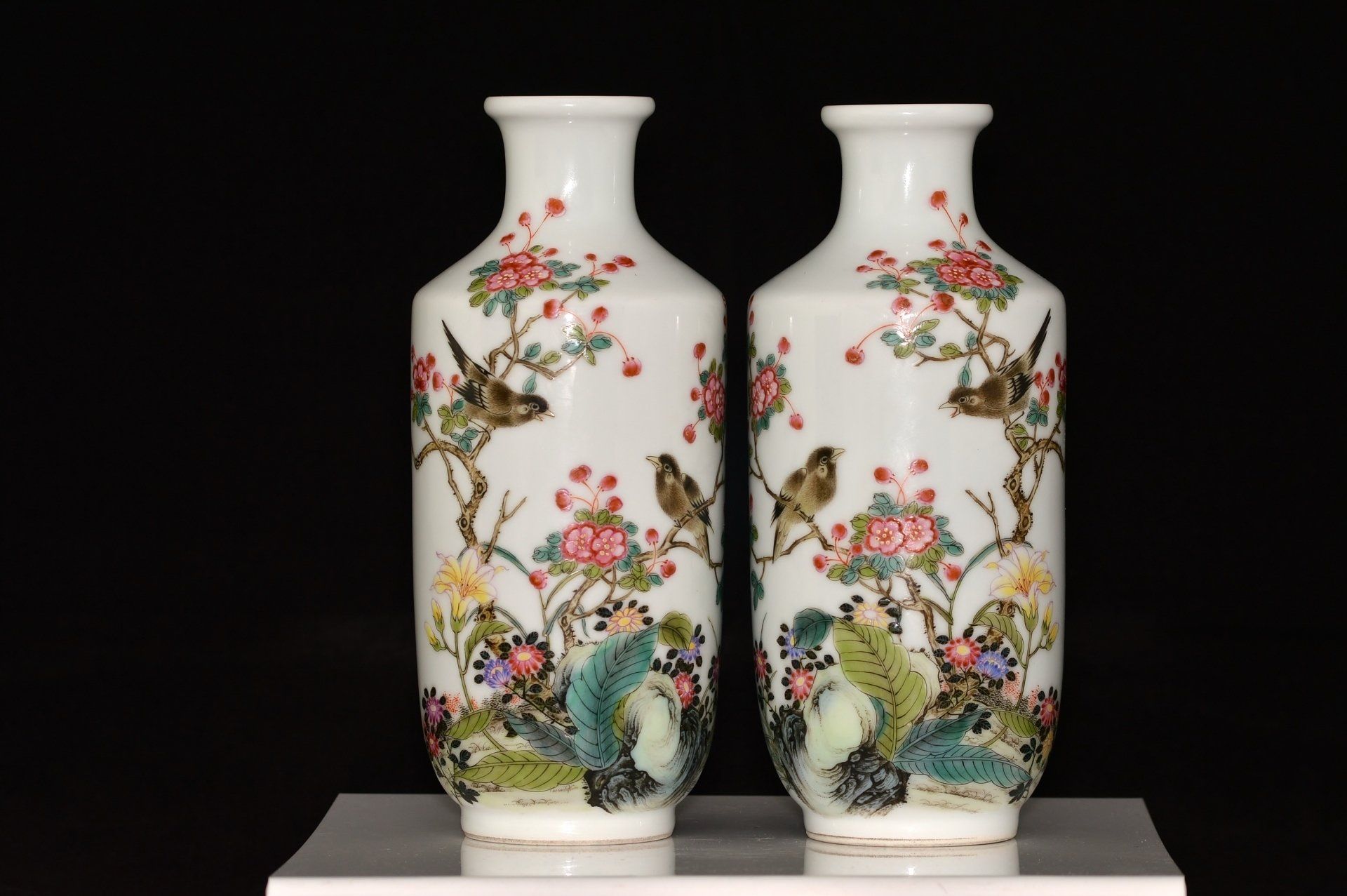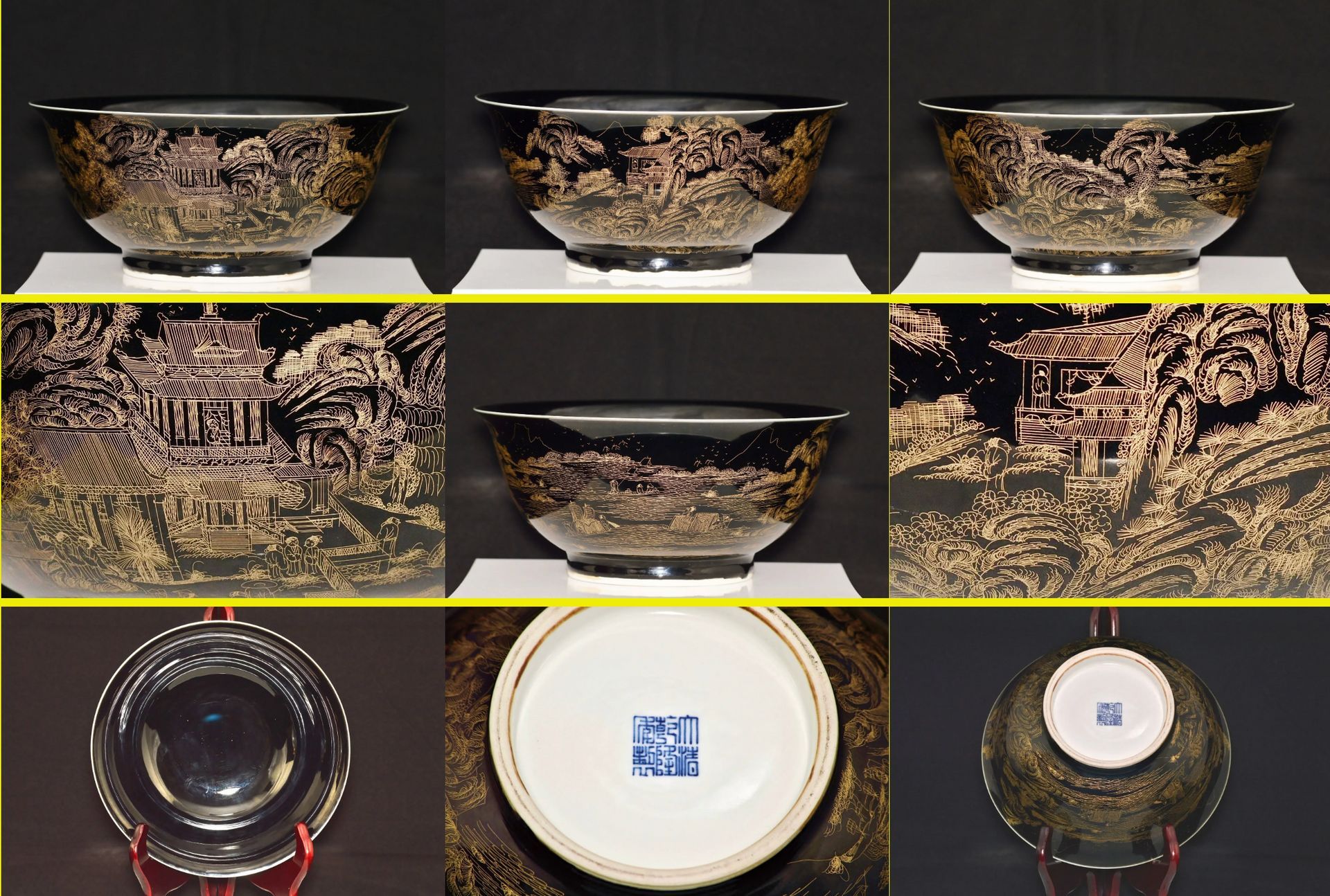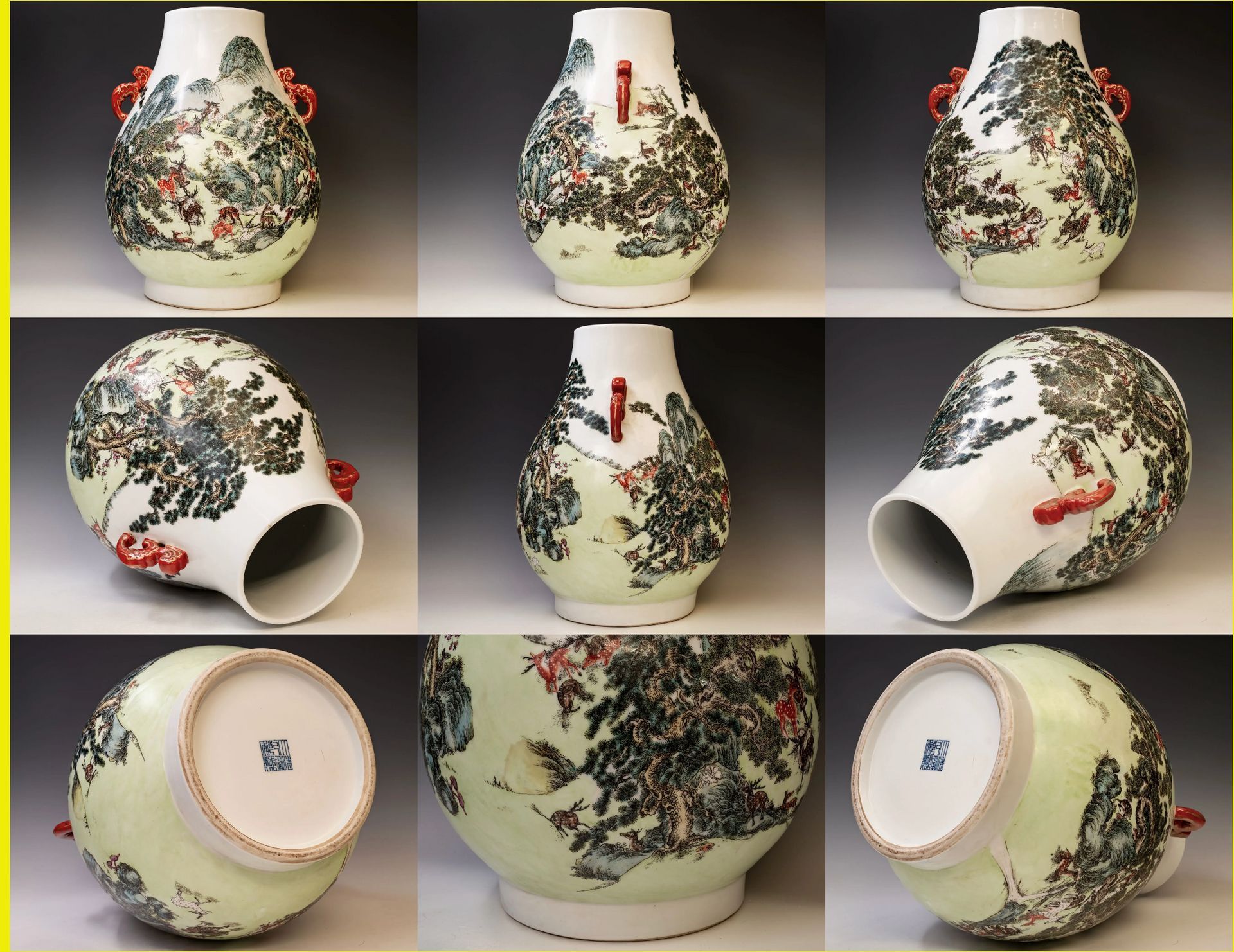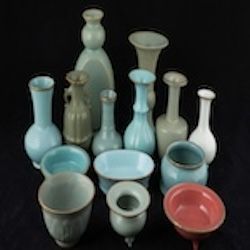Blog
Joseph.Sharon@chinesemasterpieces.com
Master Work Famille Rose Guan Vessel from the Qianlong Period of the Imperial Qing Dynasty

This Qianlong Famille Rose Guan-formed vessel represents the pinnacle of Chinese Famille Rose enamel porcelain artistry. It is arguably one of the finest examples ever documented and made available for acquisition. I invite you to reference your scholarly texts, explore auction catalogs, and consult major museums worldwide in search of a piece that may rival its unparalleled beauty and craftsmanship. The complexity of this vessel is remarkable, warranting an in-person examination to fully appreciate its exquisite details. The vessel features a multi-layered decorative scheme, with an elegant form defined by a striking blue ground that has been incised in a subtle wave-like pattern and subsequently adorned with gold accents. Scattered across the surface are delicate rose-colored blossoms that enhance its allure. The central panels exhibit masterful brushwork, showcasing branches embellished with blooming flowers and two magpie birds, all executed with an astonishing level of control—many strokes appearing to be applied with a single hair, a detail that becomes evident upon close inspection with a loupe. The panels are framed in iron red, while two leaves, also in iron red, bear intricately painted depictions of a cricket and a grasshopper. Two gold phoenix handles elevate the vessel's design, complemented by meticulously applied droplets of white enamel that accentuate the iron red throughout the piece. The interior and base are finished in a stunning turquoise hue. The color palette adheres to the esteemed Qianlong Famille Rose tradition, and the underside bears the Qianlong mark—positioned in alignment with the main panels, a characteristic typical of Imperial Qianlong pieces. Standing at 7 5/8 inches tall, this vessel epitomizes the high standards set for true masterpieces of Chinese porcelain. For any inquiries regarding this exceptional vessel, please do not hesitate to reach out.
Groundbreaking Discovery Challenges the Established History of Ru Ware
[Cherry Hill NJ 05/25/2025] – A shocking revelation in the world of ancient Chinese ceramics is set to disrupt the established understanding of Ru ware, one of the most prized ceramics of the Song Dynasty. Independent researcher and collector [Joseph Sharon] has uncovered irrefutable evidence proving that Imperial Ru wares incorporated crushed blue agate in their glazes and fire-gilded bands on their rims and bases—features that have been systematically ignored by museums and auction houses.
With a personal collection of over 300 pieces and extensive microscopic imaging evidence, [Joseph Sharon] has repeatedly attempted to present these findings to leading institutions, only to be met with silence and resistance.
Microscopic Evidence Exposes Long-Held Myths
Through high-resolution microscopic analysis, the presence of blue agate within Ru ware glazes has been confirmed. This contradicts the long-held claim that no such material remained after firing or was used in Song Dynasty ceramics. Agate, with its unique melting properties, remains intact within the glaze, creating a distinctive and recognizable effect that is scientifically impossible to replicate artificially.
Furthermore, many of these artifacts feature fire-gilded bands, a lost technique using a gold and mercury mixture that corrodes naturally over time, forming cuprite and botryoidal malachite—a signature of genuine Imperial wares. This technique has not been in use since the mid-1800s due to safety concerns, further proving the age and authenticity of these artifacts.
Resistance from Museums and Auction Houses
Despite sharing detailed analyses and microscopic photographs, leading auction houses and institutions, including the Palace Museum in Taiwan, have refused to examine the collection. The implications of this research challenge the credibility of millions of dollars' worth of past Ru ware sales, many of which were misattributed merchant-grade wares.
"The art world must prioritize historical accuracy over institutional reputations and market interests," says [Joseph Sharon]. "Refusing to engage with this evidence is a disservice to scholarship and collectors alike."
Call to Action: Seeking Open-Minded Scholars and Institutions
[Joseph Sharon] invites independent researchers, universities, and institutions to examine the collection and conduct independent testing to validate these findings.
In an effort to bring transparency to the art and research world, a new website is set to launch, showcasing high-resolution microscopic images, detailed reports, and side-by-side comparisons with known Ru ware artifacts.
History must be shaped by evidence, not by the reluctance of institutions to admit past mistakes. The time for truth is now.
For media inquiries, interview requests, or collaboration opportunities, please contact:
[Joseph Sharon]
[E-MAIL
Joseph.Sharon@chinesemasterpieces.com]
WEBSITE [https://www.chinesemasterpieces.com]
[Joseph Sharon] is a dedicated independent researcher and collector specializing in Song Dynasty ceramics. With an extensive collection and a passion for uncovering historical truths, [Joseph Sharon] has spent years analyzing and documenting evidence that challenges conventional narratives. Through scientific analysis and meticulous research, their goal is to bring long-overdue transparency to the world of ancient Chinese ceramics.
Chinese Masterpieces

Qing Dynasty Vase Featuring Hundred Cranes, Accompanied by Qianlong Seal Mark and Period Designation












